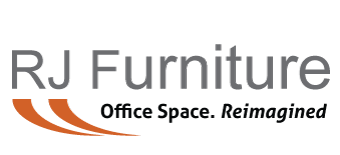How Sustainable Materials Are Shaping Office Furniture Trends in 2025
The office furniture landscape is undergoing a remarkable transformation, with sustainable materials taking center stage in shaping the trends for 2025. As businesses and employees become increasingly aware of their environmental impact, the demand for eco-friendly workspace solutions has skyrocketed. This shift is not just about being green; it’s about creating healthier, more productive environments that align with modern values and expectations.
In this article, we’ll explore how sustainable materials are revolutionizing office desks, seating, and storage solutions. We’ll delve into the ways these materials are influencing office esthetics, balancing functionality with environmental responsibility. From recycled furniture to sustainable building materials, we’ll examine the innovative approaches that are setting new standards for office design. Additionally, we’ll touch on how these trends are intertwining with other sustainable practices, such as the use of LED lighting, to create holistic, eco-conscious workspaces for the future.
Sustainable Materials Revolutionizing Office Desks
The office furniture industry is embracing sustainable materials to revolutionize desk design. Recycled plastics, metals, and reclaimed wood are gaining popularity, reducing landfill waste and the need for raw materials. These eco-friendly alternatives maintain functionality while offering unique esthetic appeal.
Engineered wood, such as plywood and medium-density fiberboard (MDF), provides an affordable option that mimics solid .
Composite desks, blending wood particles with synthetic components, offer enhanced durability and affordability.
For environmentally conscious consumers, certifications like Forest Stewardship Council (FSC) ensure materials meet established . Bamboo, cork, and sustainably sourced wood are favored for their low environmental impact.
Innovative materials like bioplastics derived from corn starch and natural fibers are designed to biodegrade, reducing long-term waste. These advancements in sustainable materials are shaping the future of office desk design, balancing functionality, esthetics, and environmental responsibility.
Eco-Conscious Seating Solutions for the Modern Office
The office furniture industry is embracing sustainable materials to create eco-friendly seating solutions. Manufacturers are utilizing innovative materials and production techniques to shape the future of office chairs. For instance, the HÅG Celi chair is made from more than 75% post-consumer recycled and renewable materials, making it a prime example of sustainable design. This chair not only prioritizes sustainability but also offers comfort and functionality.
Recycled plastics are gaining popularity in seating production. Designers are transforming waste plastic, styrofoam, and even discarded packaging into innovative chair designs. These materials reduce the need for virgin resources and minimize environmental impact. Additionally, natural fibers like hemp, jute, and sisal are being used to create sustainable and unique seating options.
Ergonomics remains a crucial factor in office seating design. Chairs with lumbar support and adjustable features are essential for promoting employee well-being and productivity. The HÅG inBalance® technology, for example, encourages subtle movement of the legs and lower body while seated, enhancing focus and comfort during long meetings.
Storage Solutions: Balancing Sustainability and Functionality
Sustainable storage solutions are becoming increasingly important in modern office design. Eco-friendly materials like bamboo, reclaimed wood, and recycled metals are gaining popularity for their durability and style. These materials not only reduce landfill waste but also add unique character to office spaces.
Modular casework stands out as a sustainable choice, allowing for repurposing and reusing components. This approach minimizes environmental impact and reduces landfill waste. Many modular casework cabinets are made with recycled content and are LEED and Greenguard Children & Schools certified.
Multi-functional furniture is another trend in sustainable storage solutions. These pieces serve multiple purposes, helping to declutter office spaces and optimize small areas. By choosing furniture with non-toxic finishes, businesses can create healthier work environments while aligning with consumer values and fostering a positive brand image.
The Impact of Sustainable Materials on Office Esthetics
Sustainable materials are revolutionizing office esthetics, creating spaces that are both eco-friendly and visually appealing. The use of natural materials like wood, bamboo, and stone brings a timeless esthetic appeal to the workplace. These elements not only enhance the visual environment but also contribute to employee well-being and productivity..
Color palettes inspired by nature, such as earthy tones and greens, are gaining popularity in office design. These colors create a calming atmosphere and help employees feel more connected to the natural world. Additionally, the integration of plants and living walls into office spaces adds texture and improves air quality
Sustainable office furniture often features organic shapes and forms, inspired by nature’s curves. This design approach creates a sense of fluidity and harmony in the workspace, making it feel more inviting and less sterile. The combination of these elements results in a workspace that is not only environmentally responsible but also esthetically pleasing and conducive to productivity.
Conclusion
The shift towards sustainable materials in office furniture is causing a revolution in workplace design, with far-reaching effects on esthetics, functionality, and employee well-being. From eco-friendly desks and seating to innovative storage solutions, businesses are embracing materials that minimize environmental impact while creating visually appealing and productive spaces. This trend reflects a growing awareness of corporate responsibility and the importance of aligning workspace design with modern values.
As we look ahead to 2025, the use of sustainable materials in office furniture is set to become the norm rather than the exception. The integration of recycled plastics, reclaimed wood, and natural fibers not only reduces waste but also brings unique character to office environments. To learn more about eco-friendly office furniture solutions, reach out to RJ Furniture. By prioritizing sustainability in office design, companies can create healthier, more inspiring workplaces that boost productivity and reflect their commitment to environmental stewardship.
To learn more about RJ Furnitures recycling, refurbishing and other green solutions please call us at (847) 473-2563 or email info@rjfurniture.com





